Winter bike commuting safety and injury prevention
Written by avid cyclist Lindsay O’Connor MPT, BscHKin, CAFCI
Registered Physiotherapist at North Burnaby Physiotherapy
Although the winter months are here, we are lucky to live in a city where the weather allows us to cycle nearly year-round! According to the city of Vancouver, approximately 10% of Vancouverites cycle to work, (and there are 50,000 cycling trips through the city each day.) As a physio and cyclist myself, I have spent the last 13 years commuting to work and school by bike regularly, and treat many cyclists at my Burnaby Physiotherapy practice. I thought I would share some handy tips for the Metro Vancouver bicycle commuter, to help keep you injury free, and riding comfortably throughout the year!
First and foremost, safety should be every cyclist’s first priority. Invest in bright LED front and rear lights with blinking functions. Wear reflective jackets and pants, and consider adding reflective tape to your bike. ALWAYS wear a helmet, and ensure that it fits snugly, and is replaced in the event of a crash. Generally, it’s recommended that helmets are replaced every 5 years even without a crash, due to general wear and tear and break down of material from UV light and minor bumps and drops. Through the winter months, especially when it is darker earlier, being seen and being aware of your surroundings is paramount to arriving at your destination safely.
Although carrying work related items is often essential, consider carrying as little as possible by leaving some items at work such as toiletries or extra clothing. If you do have lots to carry, consider panniers bags that attach over the back of your bike, or backpacks that distribute weight onto the hips. When testing out cycling bags, check for a snug fit, well padded shoulder straps, a chest strap, and waist strap to help secure your load. Also make sure that you have full range of motion of your neck when wearing your bag and helmet together.
Bike shoes are another great investment, even if you are choosing not to clip in to your pedals. Cycling specific shoes have a stiff shank in them that prevent your foot from flexing over your pedal. Cycling in regular soft soled running shoes can cause issues like plantar fasciitis, achilles tendinopathy, foot pain, and knee pain.
Saddles, or bike seats are another rider specific item that can significantly improve comfort. Saddles come in various widths and thickness of padding. They are meant to provide cushioning under the ischial tuberosities or ‘sit bones’ and prevent pressure in other areas. Seats can be purchased in male and female specific versions that accommodate the different shapes of male and female pelvises. If you are riding longer distances you may also wish to invest in padded shorts. A poorly fit saddle can cause issues such as pelvic pain, low back pain, and leg or foot numbness.
If you are purchasing a new bike, or simply looking to improve your comfort on your current bicycle, consider investing in a professional bike fitting. Some local bike shops will provide bike fits when purchasing a new bike, or you can book one for a fee. They will make sure that you are optimally situated on your bike to improve ergonomics while riding. This can be done by changing things like handlebar height, stem length, seat height and position (front/back), and foot position on pedals. Improving positioning can prevent common cycling injuries such as mechanical low back pain, pelvic malalignment, knee pain, neck fatigue and pain, upper trapezius pain, wrist discomfort, and hand numbness when riding. If you are already riding and experiencing any of these issues, they can often by managed though physiotherapy treatment and simple improvements in bike fit or riding position. Give us a call at our Burnaby Physiotherapy Clinic 604 298-9048, or visit us online to access our online booking software https://northburnabyphysio.
Don’t let discomfort while riding your bike hold you back from all those gas savings, traffic free commutes, and free exercise!

